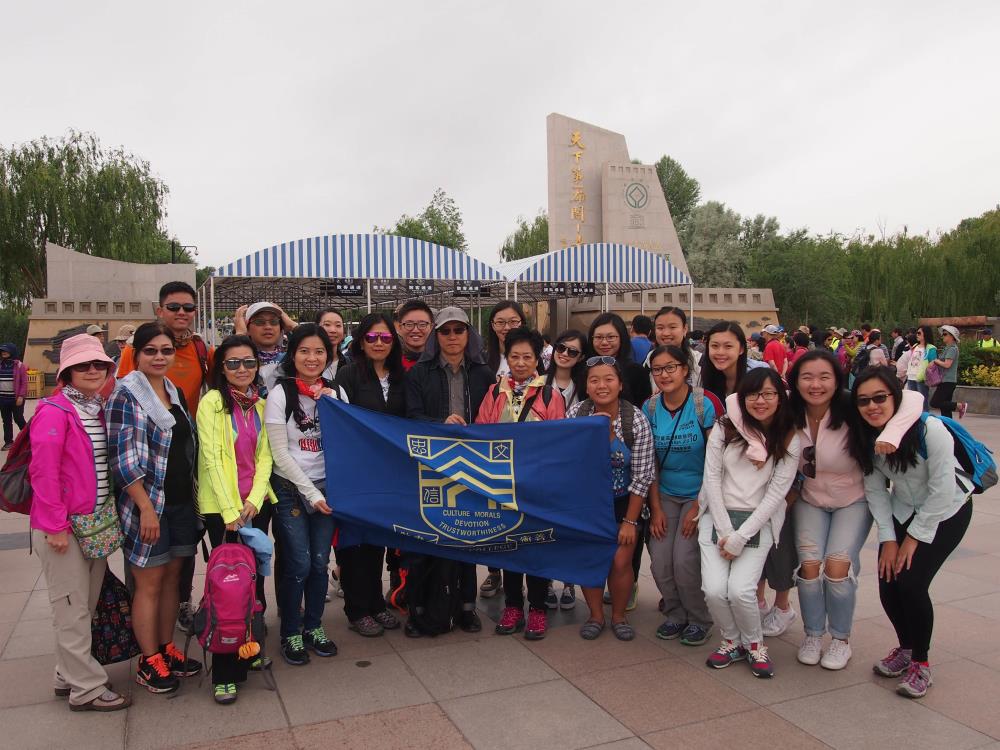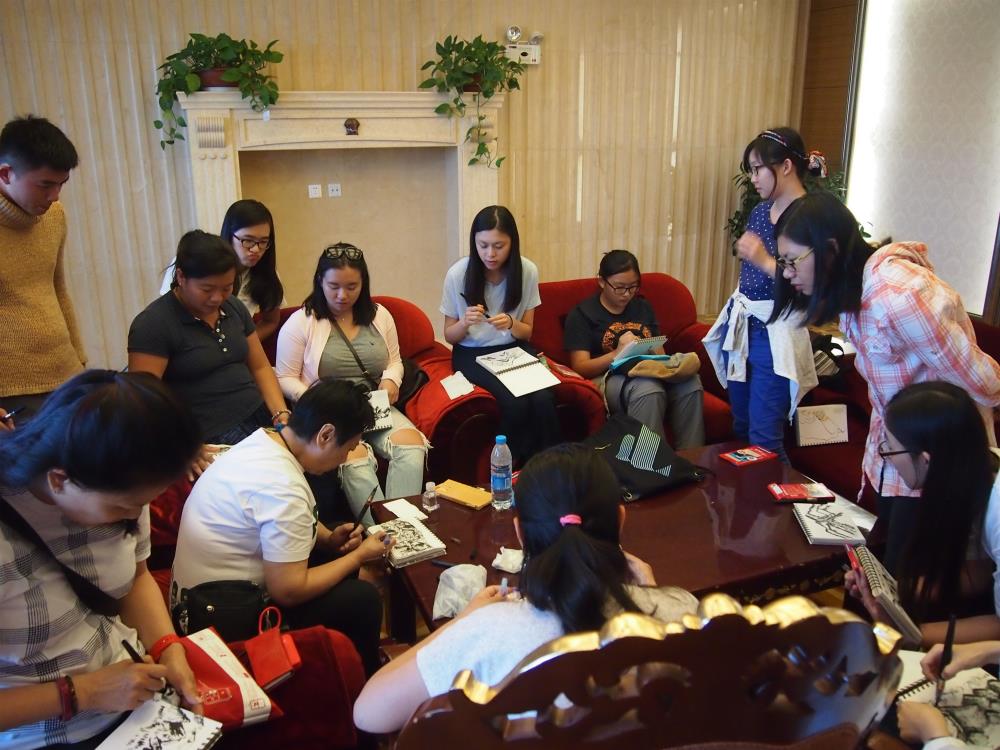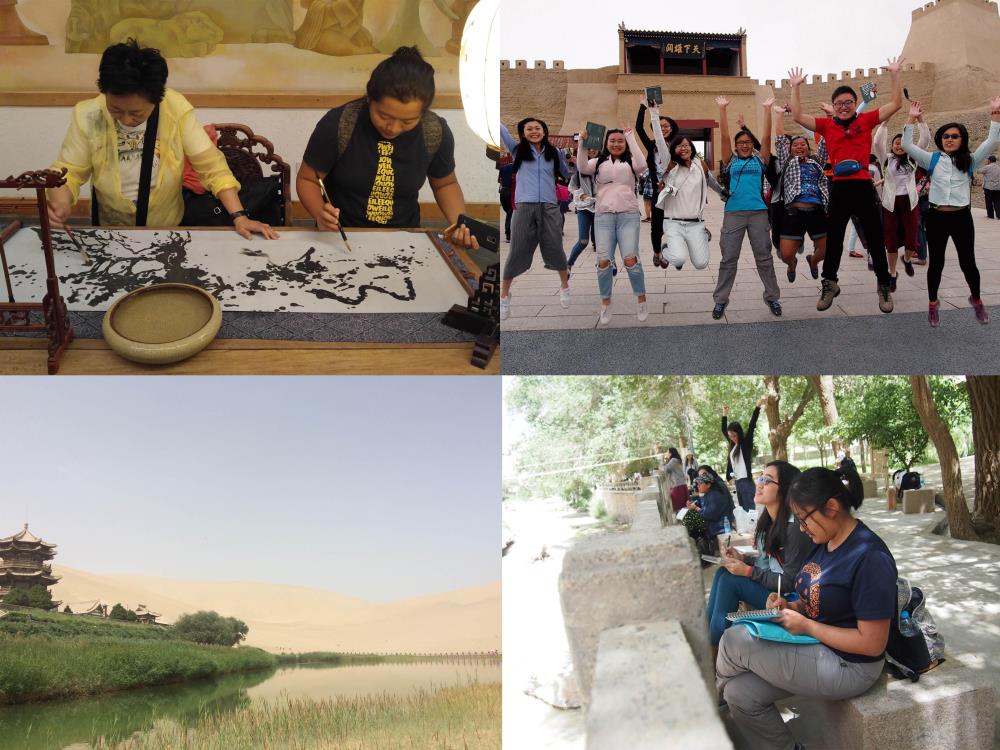Painting Dunhuang

When we speak of ‘Dunhuang’, we will naturally call to mind the well-known Dunhuang grottoes like the Mogao Caves (also known as the Thousand Buddha Grottoes) and the amazing frescoes inside the caves. 12 SHHO students, led by the Chinese painting master Prof. Ng Yuet-lau, the instructors of the Ling Ngai Art Association and the College staff, were lucky enough to visit this famous travel attraction, previously a bustling city on the Silk Road and currently a ‘National Historical and Cultural City’ designated by the Chinese government. They also brought with them painting tools and sketchbooks, and immersed themselves in ink drawing before undulating mountains and beside a gurgling river, which is rarely found in the desert area, allowing themselves to follow their hearts in the process.

The SHHO students began the eight-day cultural and sketching tour to Dunhuang on 20 June. In the afternoon of that day, they arrived in Lanzhou and then travelled to Zhangye after dinner, the first destination of the trip, by high-speed rail. The next day when the sun was shining brightly, the trippers made their way to Zhangye Danxia Geological Park and enjoyed the fun of drawing from nature there. Danxia Geological Park is noted for its peculiar topographic features. Distinct layers of sedimentary rock that resemble a layer cake are the result of the deposition of red sandstone.

Due to weathering, exfoliation and water erosion over millions of years, rocks in extraordinary shapes and unusually varying colours like red, yellow, orange and green, were sculpted. Faced with the nature’s superlative craftsmanship, some students with no sketching experience did not know how to start. Li Wanze shared her confusion at that time, ‘Which part of the undulating mountains in front should I select for painting? Where on the square sketch paper should I begin to draw? How should I use my brush to draw heavy and light strokes? Fortunately, a Ling Ngai instructor showed me the direction to start by outlining a few casual strokes on my sketchbook.’

In the evening, Prof. Ng Yuet-lau modified the students’ works one by one in the hotel lobby while patiently answering the students’ questions and sharing her years of experience in painting. She reminded them to seize the main object instead of drawing everything they saw. She also taught them practical skills such as how to draw the background and foreground, leave blank spaces and add shading in their drawings appropriately. In the 1970s, Prof. Ng was under the tutelage of Prof. Chao Shao-an and Prof. Huang Chun-pi, masters of the Lingnan School of Chinese painting, and acquired the essence of the creative Lingnan style. Her professional instruction not only provided the students with practical drawing techniques, but also kindled their interest in sketching. Before the journey ended, the trippers went to visit the Yulin Caves in Dunhuang and afterward took up their brushes to draw again by the side of the Yulin River. The sounds of the murmuring river, the whirling leaves, and the students’ whispering combined to create a tranquil, soothing ambience, allowing the students to relax and feel more deeply the pleasure and magic of artistic creation.

Touring the Dunhuang grottoes like the famous Mogao Caves was also an important part of the journey. Thanks to the College’s special arrangement, the trippers were allowed to visit the special caves the access to which was normally prohibited. Although some special caves had been unfortunately destroyed, the magnificent frescoes and sculptures inside still retained their exquisiteness and lifelikeness; even the vivid colours on them had not faded over time. The human figures with their meaningful looks and details seemed to be narrating a thousand-year-long story to visitors. Walking around the caves built in different dynasties, the students had a better understanding of the changes in the style of Chinese art across different periods, for example, from the bold and vigorous brushwork in the Six Dynasties, to the magnificent colouring typical of the Tang dynasty, and then to the realistic portrait of ordinary townsfolk unique to the Song dynasty. Apart from allowing people to worship various gods inside, the caves which resemble a collection of Buddhist stories on display enable people to find out the transformation of different Buddhist sects and teachings over a thousand years.

‘Dunhuang is a place where culture and history were recorded by means of art. We are lucky enough to use art in a similar way to report our experiences here,’ Yuen Hong Wing wrote in her travel journal. The Dunhuang sketching tour not only exposed the SHHO students to beautiful scenery, the thousand-year-long Dunhuang history and culture, and the fun of drawing from nature, but also allowed them to be acquainted with their good travel companions, leaving an unforgettable memory in their minds.

The trippers produced a short video to record the beautiful scenery and their happy memories of the Dunhuang tour. Please click the following link to view the video:
https://www.youtube.com/watch?v=aK0JpRK6yRs